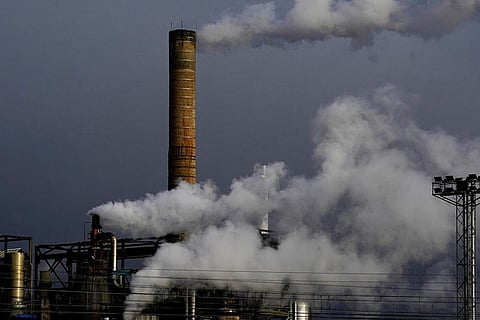

Chennai
But they have so far continued to make choices that push them further away from targets they agreed upon five years ago to protect the climate and their citizens. By burning fossil fuels and chopping down rainforests, countries are on track to heat the world by 3.2 degrees Celsius this century, despite committing to keep it well under 2C.
The annual emissions gap report, now in its 11th year, assesses the gap between what countries committed to doing under the Paris Agreement and what they need to do to keep temperatures in check. Despite recent pledges from major polluters to cut their emissions, the report describes concrete commitments as “woefully inadequate.” “The wealthy bear the greatest responsibility,” wrote Inger Andersen, executive director of the UN Environment Program. The richest 1% of people, who emit more than double that of the poorest half of the global population, “will need to reduce their footprint by a factor of 30 to stay in line with the Paris Agreement targets.”
Emissions gap wide open
With factories closed, flights grounded and people buying fewer things, the pandemic is expected to lower carbon dioxide emissions by up to 7% this year, the report found. But the coronavirus pandemic will do little to help governments meet temperature targets unless world leaders prioritize a green recovery. By investing in green jobs and infrastructure and choosing climate-friendly policies, world leaders could lower emissions by a quarter of what they would otherwise be by 2030, according to the report.
Among the suggested solutions are ending fossil fuel subsidies, banning new coal plants and planting trees in deforested landscapes. But the report says most rich countries are instead supporting a “high-carbon status quo” with some putting money into new fossil fuel projects. “There’s been a perception that, because we’ve been stuck at home and not able to travel, we were doing great and moving in the right direction,” said Martina Caretta, assistant professor of geography at West Virginia University in the US and IPCC author, who was not involved in the report. “But the truth that comes out is that this is just like a blip.” The report also calls for more action on planes and ships, which together account for 5% of global emissions and growing. About two-thirds of these emissions are international and not directly covered by national climate action plans under the Paris Agreement.
Rise in carbon-neutral pledges
Several countries have upped their ambitions in recent months. China, the world’s biggest polluter, said in October it will be carbon neutral by 2060. South Africa and South Korea have now committed to doing so by 2050, and US president-elect Joe Biden — who has promised to bring the US back into the Paris Agreement — has agreed to the same goal. Japan has joined the EU in aiming for net-zero greenhouse gas emissions by the middle of the century, which would mean also cutting down other pollutants like methane.
Last week, the UK set itself the most ambitious short-term goal of any major economy, pledging to slash emissions by 68%— compared to 1990 levels — within this decade. None of these commitments have yet been translated into climate action plans known under the Paris Agreement as nationally determined contributions. Burning fossil fuels has already warmed the Earth by more than 1C and this has made storms stronger, heat waves hotter and droughts longer. By emitting more CO2 with each passing year, leaders are locking in deeper cuts to emissions in the future.
— This article has been provided by Deutsche Welle
Visit news.dtnext.in to explore our interactive epaper!
Download the DT Next app for more exciting features!
Click here for iOS
Click here for Android